A Startling Confession May Have Just Revealed D.B. Cooper's Real Identity After 52 Years
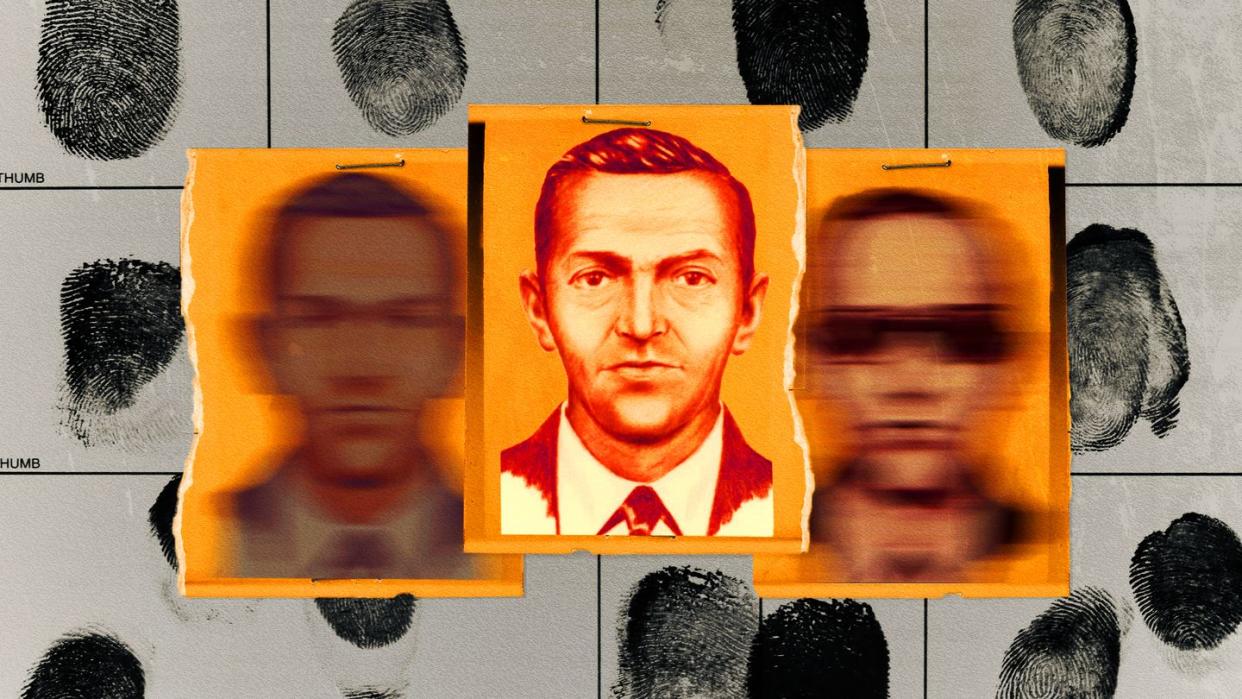
"Hearst Magazines and Yahoo may earn commission or revenue on some items through these links."
This story is a collaboration with Biography.com.
The case of the elusive D.B. Cooper stands as aviation’s most captivating unsolved mystery since Amelia Earhart vanished without a trace. For over half a century, the identity of the infamous skyjacker, who boarded Northwest Orient Flight 305 on November 24, 1971, parachuted into the night, and disappeared with $200,000, has remained an enigma. Despite Cooper’s discarded tie and the countless theories spun from thin air, not a single individual has been definitively unmasked as the man behind the moniker.
But that may soon change, as the U.S. Sun reports a startling new claim: a man says he knows the true identity of D.B. Cooper, because he received a confession from none other than his own mother.
No, Richard “Rick” McCoy III isn’t claiming that his mom was the skyjacker who daringly dove from the plane clutching all that cash. Rather, he firmly believes the mystery man is his father, Richard Floyd McCoy Jr., a Vietnam veteran and seasoned skydiver.
Rick says that it was his mother, Karen McCoy, who stood as his father’s accomplice. In a series of candid disclosures, Karen McCoy allegedly revealed to her children that she assisted in orchestrating not just the most notorious skyjacking in history, but also an additional one, confessing she “helped plan both of his heists.”
Of course, only one heist was ever attributed to D.B. Cooper, who actually called himself “Dan Cooper,” according to Biography. The other crime that Rick McCoy references has unequivocally been credited to his dad, Richard. Unlike Cooper’s unsolved caper, Richard McCoy’s skyjacking on April 7, 1972, led to his quick capture just three days later.

After his arrest, Richard was sentenced to 45 years in prison, “but escaped after two years and was killed in 1974 in a shootout with cops in Virginia,” per the Sun. According to their report, Rick has even provided DNA evidence to the FBI in hopes of finally resolving the long-standing mystery of D.B. Cooper’s identity. Rick had previously refrained from collaborating with the Bureau, choosing to wait until after his mother’s death in December 2020.
So, that should solve it, right? Since law enforcement seemingly has a Cooper confession, that means we can answer the question, “What happened to D.B. Cooper?” with, “We shot him 52 years ago! Case closed!”
Except, not quite. It’s going to take much more than a confession to truly identify D.B. Cooper. This alleged new lead will need to be subject to heavy scrutiny. Why? Because if you’re inclined to take a D.B. Cooper confession at face value, then it would appear as though the fateful Flight 305 had more hijackers on board than passengers, as Rick McCoy is hardly the first person to claim a Cooper confirmation.
The 6 Other D.B. Cooper Confessors
On Thanksgiving Eve 1971, the man we now call D.B. Cooper “used a bomb threat to hijack a flight from Portland, Oregon, to Seattle,” according to Biography. He demanded “$200,000 in $20 bills” as well as four parachutes. After his terms were met, he jumped from the aircraft, never to be seen again.
In 2016, with no announced solution for who was behind the famously misstated alias, “the FBI said it was closing its investigation.” However, the U.S. Sun also reports that the FBI has “quietly reopened” the case, in relation to the new McCoy leads.
Based on eyewitness statements, the FBI described Cooper as a “white male, [6-foot-1], 170-175 pounds, age-mid-forties, olive complexion, brown eyes, black hair, conventional cut, parted on left.” With more than a half-century passing since that middle-aged man pulled off his heist, it’s likely that whoever made away with all that money won’t see a jail cell before they skydive off of this mortal coil.
What isn’t so certain is that the mastermind behind the famous NORJAK heist carried their secret to the grave. So let’s meet six more possible D.B. Coopers, who may or may not have told the truth when they confessed to the legendary crime.
D.B. Cooper Confessor #1
Bryant “Jack” Coffelt
Would you believe that D.B. Cooper has a connection to Abraham Lincoln? Would it stretch credibility to think that the individual who famously parachuted from Flight 305—his only remnants being a “clip-on necktie and eight cigarette butts”—also served as both chauffeur and companion to Robert Todd Lincoln Beckwith, the great-grandson of the 16th President of the United States? If this tale seems plausible to you, then you just might have been an ideal target for the notorious swindler Bryant “Jack” Coffelt. And you certainly wouldn’t have been alone.
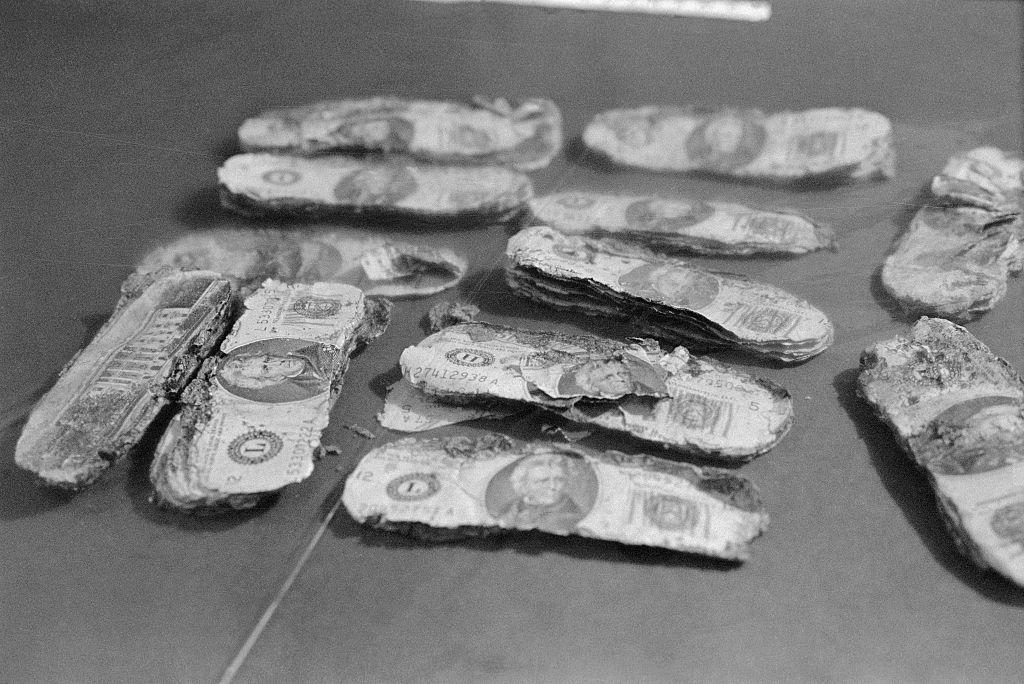
In 1972, Coffelt reached out to his former cellmate, a man named James Brown (not “The Godfather of Soul” James Brown) with a confession that he was behind the D.B. Cooper hijacking. As the book NORJAK: The Investigation of D.B. Cooper lays out, Coffelt claimed he landed near Mount Hood, injuring himself and losing the money in the process. He then burned his parachute with magnesium powder and fled in a Jeep he had stashed nearby.
At Coffelt’s urging, Brown pursued a movie deal for this dubious confession. FBI records show that the Bureau was aware of Coffelt’s claims, as well as Brown’s assertion that they had embarked on a camping expedition to retrieve the missing money, though they returned without a dime. But the particulars provided by Coffelt and Brown about the incident didn’t match up with confidential case details, leading both the FBI and Ralph Himmelsbach, the original head investigator of the case and author of NORJAK, to suspect that Coffelt, a known scam artist, was merely attempting to pull another con.
D.B. Cooper Confessor #2
Duane L. Weber
It’s quite likely that Duane L. Weber harbored some secrets. As a World War II veteran with a post-war record of incarceration spanning over 20 years for crimes like forgery and burglary, it stands to reason that a man with such a checkered past might have some skeletons in his closet.
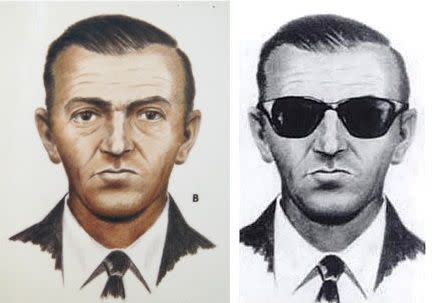
So when Jo Weber heard her husband’s confession from his Florida hospital bed during his final days, as reported by CBS News, she may not have been entirely surprised.
“He says, ‘Come here. Come closer.’ He wanted me about two feet from his face,” Jo Weber told CBS News. “He says, ‘I have a secret to tell you.’ I said, ‘What?’ He says, ‘I’m Dan Cooper.’”
The bombshell confession meant little to Jo at first. She didn’t know who “Dan Cooper” was. But over time, CBS News reported, she began to put together the pieces:
“Jo recalled the sleep-talking nightmare Duane had about ‘leaving finger prints on a plane,’ an old knee injury he claimed he got from jumping out of a plane, the local library book on D.B. Cooper with Duane Weber’s handwriting in the margins.”
However, the problem with Weber’s confession is that if he claimed to have left fingerprints on the plane during the NORJAK heist, they weren’t his own. The prints and DNA found on the plane didn’t match Weber’s, leading the FBI to rule him out as a suspect based on this evidence.
D.B. Cooper Confessor #3
Barbara Dayton
The description of D.B. Cooper that every FBI agent and amateur sleuth has been relying on for 52 years starts with “white male.” This detail has been one of the few consistent elements accepted in the Cooper case—but maybe that’s why they’ve never caught the culprit.
Geoffrey Gray’s Skyjack: The Hunt for D.B. Cooper includes the story of Barbara Dayton. The aviation enthusiast, World War II veteran, and U.S. Merchant Marine, who died in 2002, may have been the first person to undergo gender reassignment surgery in the state of Washington, in 1969.
Dayton purportedly made a bold confession to her friend Ron Forman and his wife, claiming that two years after undergoing a gender reassignment surgery, Dayton boarded a plane while presenting as a male, altered her voice, and carried out the greatest unsolved aviation heist ever. Dayton, who had been denied a commercial pilot’s license, allegedly sought revenge on the airline industry with this act and proclaimed to have hidden all the stolen money in a cistern in Woodburn, Oregon.
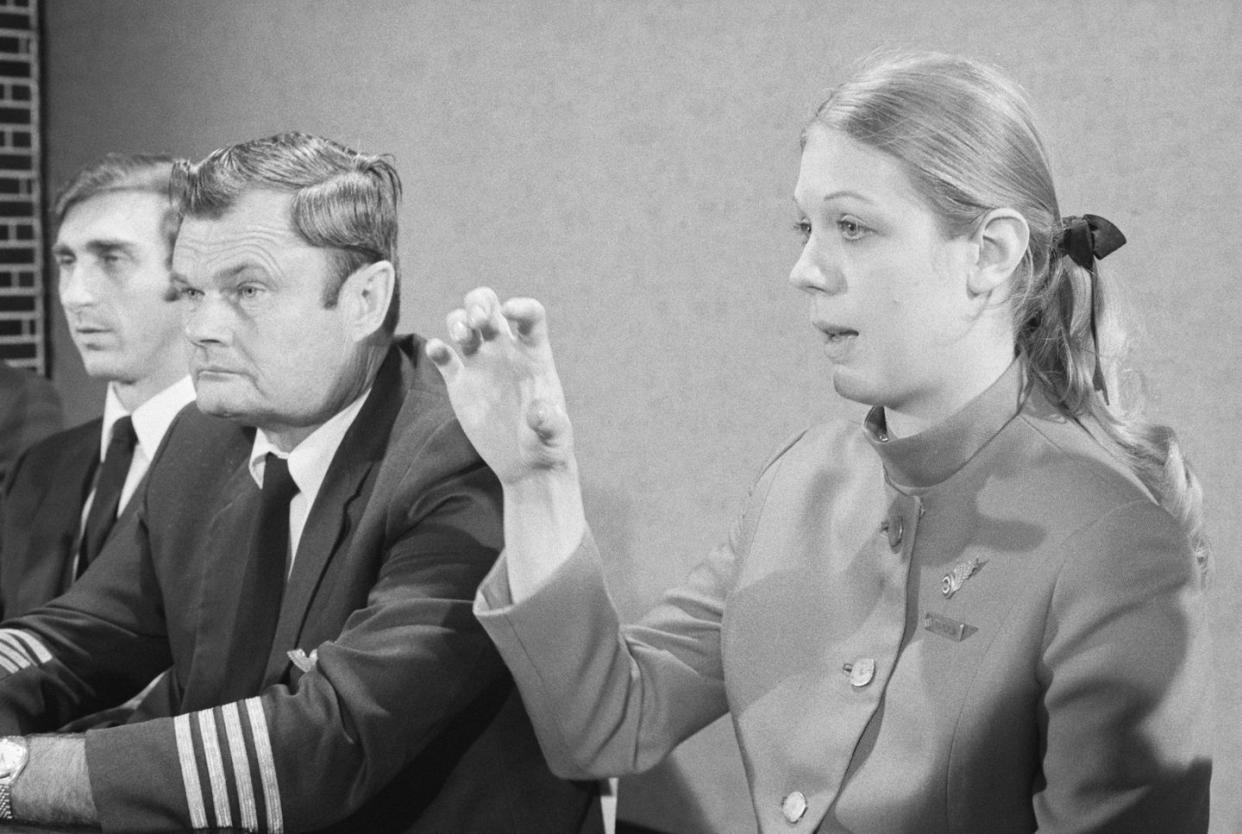
At least, that’s what Dayton said until she realized that the government was still ready, willing, and able to prosecute whoever committed the hijacking. Then, she swiftly recanted her confession and swore she had made the whole thing up. To date, there has been no actual evidence linking Dayton to the crime.
D.B. Cooper Confessor #4
William Pratt Gossett
What did your father give you for your 21st birthday? A car? A savings bond? Your first legal beer? How about the keys to a safety deposit box at a bank in Vancouver that he claimed was full of money stolen during a plane hijacking?
If you answered “yes” to that final one, then hello to you, Greg Gossett. We have some questions.
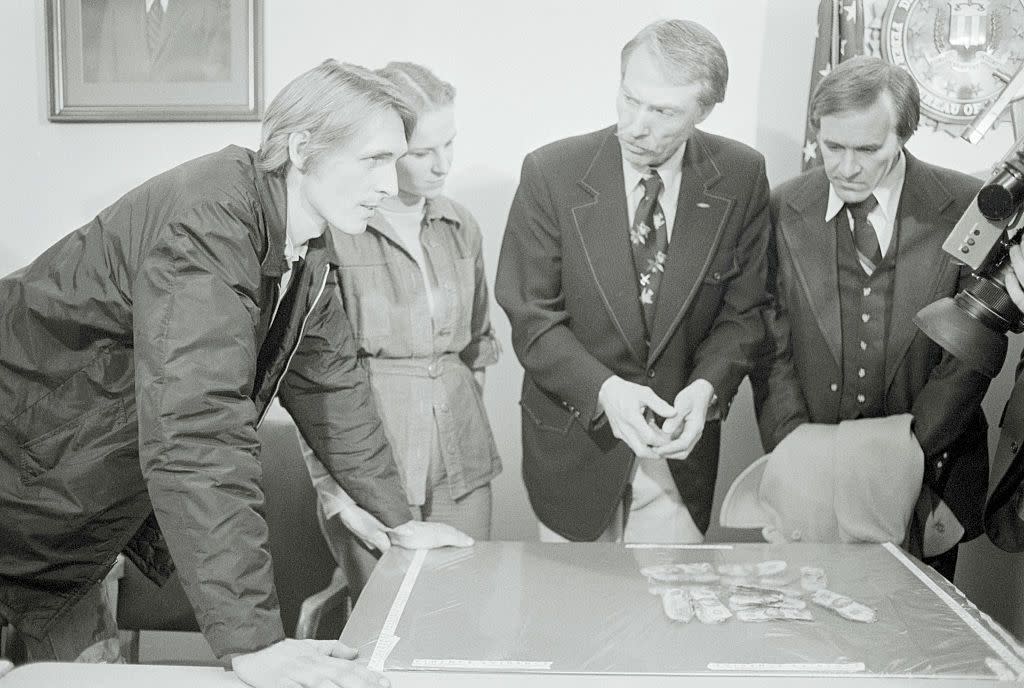
According to an ABC News article from 2008, Greg Gossett claimed that on his 21st birthday, his father, William, showed him two keys for a safety deposit box, claiming that within that box was the money from the D.B. Cooper heist, which he himself had committed. “He said that I could never tell anybody until after he died,” Greg said. Greg’s brother, Kirk, also claimed their dad told the story several times: “He had the type of temperament to do something like this.”
But it seems the FBI requires more concrete evidence than someone’s temperament and an old family tale. “There is not one link to the D.B. Cooper case other than the statements (Gossett) made to someone,” FBI Special Agent Larry Carr said in the ABC News piece.
But would William Gossett, a man who “worked as a radio talk-show host in Salt Lake City, where he moderated discussions about the paranormal” really make up a story like that? Surely, there’s an easy way to prove the story. Greg Gossett merely needs to take that key to Vancouver and open the box that’s apparently filled with bills with serial numbers the FBI can verify.
It’s been more than 15 years since that ABC News story, and it doesn’t appear anyone has bothered to check that alleged safety deposit box.
D.B. Cooper Confessor #5
Walter R. Reca
D.B. Cooper enthusiasts are quite familiar with the name Walter Reca. Compared to other alleged confessions to being D.B. Cooper, often told vaguely to friends or relatives, Reca’s case sticks out. In his confession, the former paratrooper specifically described how he pulled off the heist—and anyone can hear it. Reca’s close friend, Carl Laurin, recorded his confession and released it to the public via the Daily Mail.
Laurin, who wrote D.B. Cooper & Me: A Criminal, a Spy, My Best Friend, claimed he had additional evidence beyond the audio recordings. Oregon Live reported that Laurin possessed documents detailing how he allegedly used a large portion of Reca’s $200,000 heist money. As for the “Spy” in the book’s title, Laurin contended that after the heist, Reca served as a high-level covert intelligence operative for various governments, as noted by the Daily Mail.
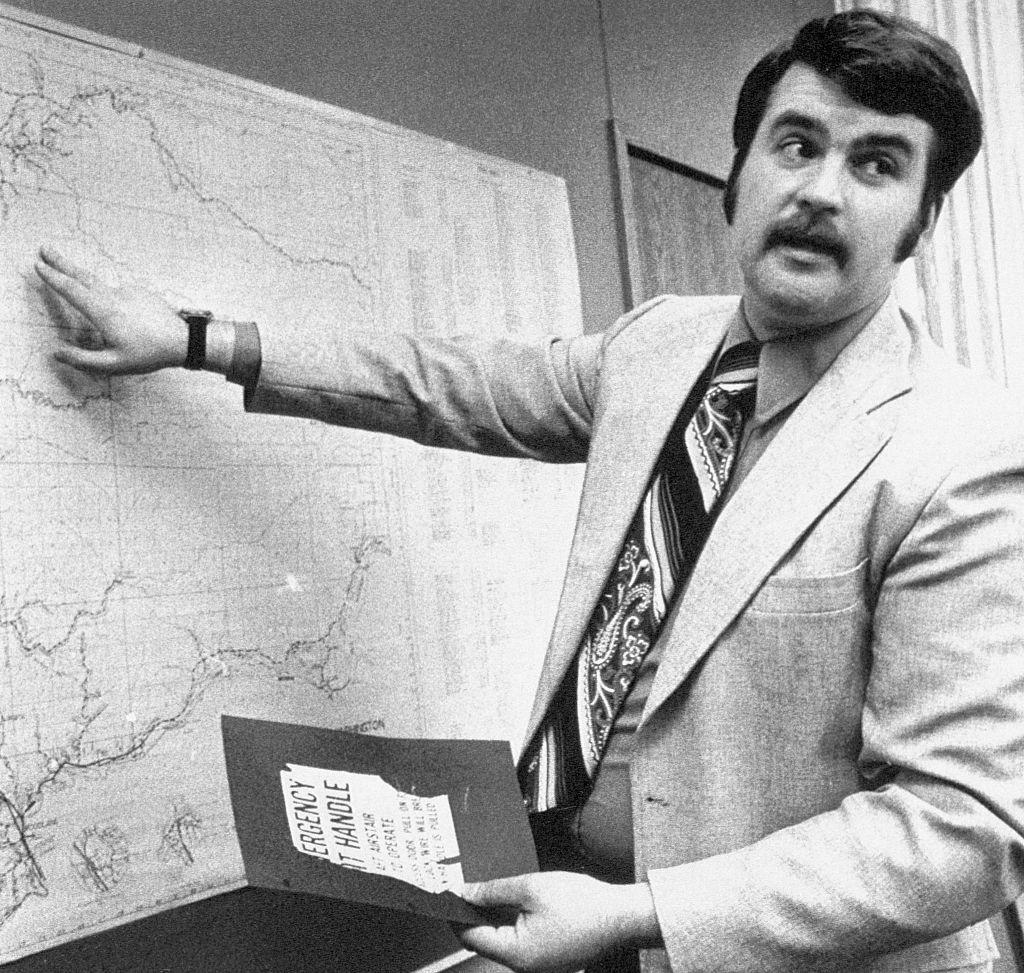
In Reca’s version of events, after jumping from the plane, he landed in Cle Elum, Washington, where he went to a roadside diner and asked a dump truck driver to give his friend directions to the diner over the phone.
Decades after the alleged encounter, Laurin said he found Jeff Osiadacz, who reportedly recalled a man at a diner requesting that he provide directions to someone else on the phone. This man, similar to Walter Reca, did not match the sketched composite of D.B. Cooper. This discrepancy is offered as a reason why Osiadacz remembered the unusual diner meeting for so long, yet never mentioned it in connection with the D.B. Cooper case.
But many skeptics find Osiadacz’s memory hard to believe, especially since Cle Elum is over 150 miles from D.B. Cooper’s presumed landing area, given the aircraft’s position during his jump. King5.com highlights these and other inconsistencies, casting doubt on the purported confession. Reca may have the most thorough and detailed confession, but within those details is room for reasonable doubt.
D.B. Cooper Confessor #6
Robert Rackstraw
Hijacking a plane and parachuting away with $200,000, hoping to never be caught, is a wildly risky move. And if a disposition for wildly risky moves is key to profiling potential D.B. Cooper suspects, then Robert Rackstraw should be a prime candidate The pilot and Vietnam veteran was on U.S. law enforcement’s radar in 1977, when he was “suspected of kiting checks for $75,000,” the Daily Mail notes. Yet, he managed to elude capture and flee the country.
Now, leaving the U.S. for Iran in the late 1970s to “teach the Shah’s men how to fly helicopters” during the 1978 Qom protests—a precursor to the Iranian Revolution—is an entirely new level of death-defying. Rackstraw was eventually extradited back to the U.S. after authorities discovered 14 rifles and 150 pounds of dynamite in his storage units.
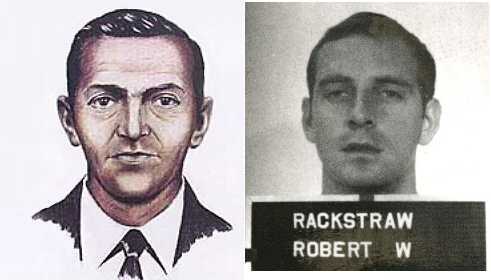
Then, of course, there’s his arrest for the alleged murder of his stepfather, a charge for which he was later acquitted.
That’s when Rackstraw decided the only real course of action left for a man who had generated that much heat from the Feds was to die himself. So Rackstraw faked his own death, by pretending to crash his plane into Monterey Bay.
Rackstraw was never formally linked to the D.B. Cooper case by any law enforcement agency, but author and amateur investigator Tom Colbert went to great effort to prove that Rackstraw was the man behind the heist.
Colbert pressured the FBI to release its D.B. Cooper case files via the Freedom of Information Act (FOIA) and utilized this information to build his case against Rackstraw. He highlighted letters sent to The Seattle Times, The New York Times, The L.A. Times, and The Washington Post, allegedly from Cooper himself. While some wrote these off as hoaxes, Colbert argued that they were, in fact, coded admissions of guilt from Rackstraw.
Indeed, Rackstraw frequently suggested he was D.B. Cooper. He even said it to Colbert’s face. In Colbert’s 2016 HISTORY Channel documentary series, D.B. Cooper: Case Closed?, Rackstraw is captured on camera telling Colbert, “I told everybody I was,” after Colbert proposed to pay him $20,000 for the storytelling rights to his life.
But Rackstraw was simply confirming that he had claimed to be D.B. Cooper, not that he actually was the skyjacker. This is a distinction he doubled down on when the surge of interest from the HISTORY series led to attention Rackstraw found unwelcome. “It’s a lot of [expletive],” he told PEOPLE following the show’s airing, and he later said the notoriety cost him a job. Rackstraw passed away in 2019, having firmly denied any involvement in the D.B. Cooper case until the end.
You Might Also Like
